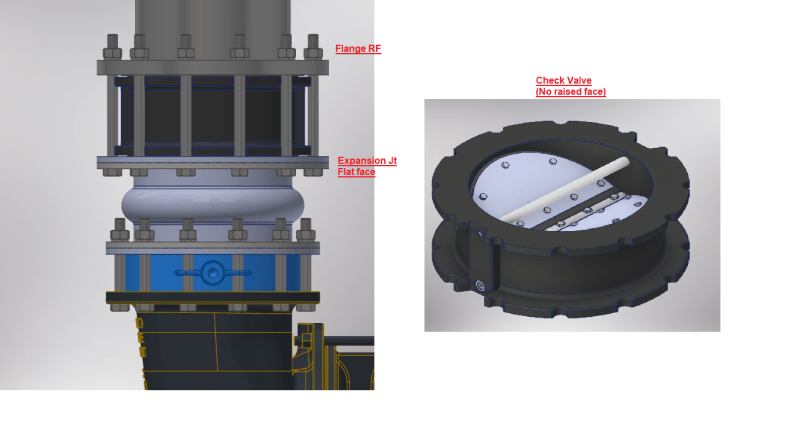coolniks37
Mechanical
- Feb 7, 2013
- 85
Hey everyone,
Need some advice on gasket dimensions for a 12" wafer-style butterfly valve connecting to a 12" B16.5 flat face flange. It's for an air line from a 10psi blower. Any insights on the ideal dimensions? Also, what adjustments are needed if I switch to an RF flange?
Similarly, facing a puzzle with a 12" wafer-style FF check valve. It's got a flat face flange on one end and a raised face flange on the other. Any suggestions for gasket dimensions? And how would those change if I opt for an RF valve?
Lastly, clueless about gasket thickness. Are there any guidelines or standards to follow? Any advice on determining the right thickness would be highly appreciated.
Thanks in advance!
Need some advice on gasket dimensions for a 12" wafer-style butterfly valve connecting to a 12" B16.5 flat face flange. It's for an air line from a 10psi blower. Any insights on the ideal dimensions? Also, what adjustments are needed if I switch to an RF flange?
Similarly, facing a puzzle with a 12" wafer-style FF check valve. It's got a flat face flange on one end and a raised face flange on the other. Any suggestions for gasket dimensions? And how would those change if I opt for an RF valve?
Lastly, clueless about gasket thickness. Are there any guidelines or standards to follow? Any advice on determining the right thickness would be highly appreciated.
Thanks in advance!

